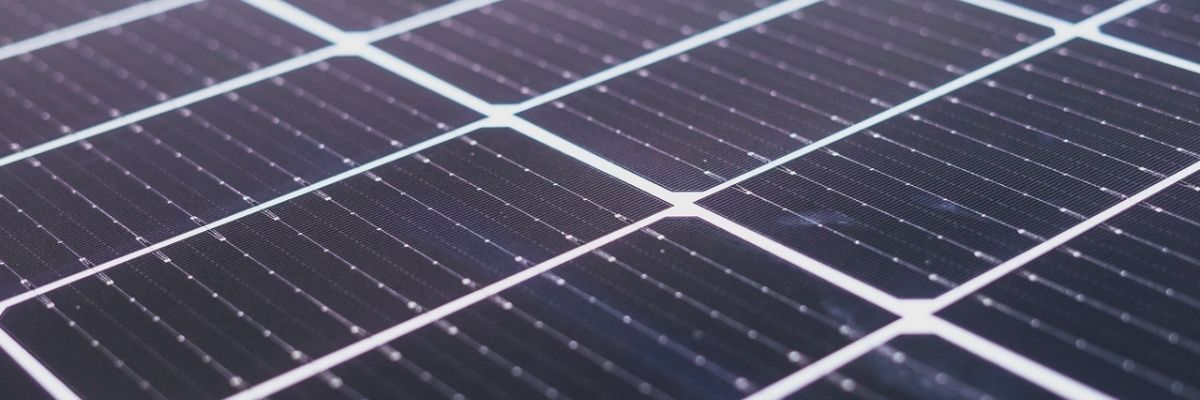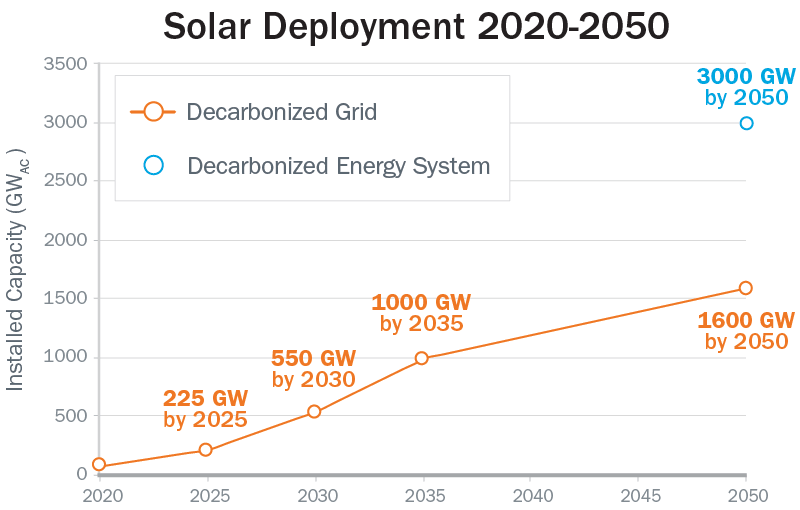The Solar Futures Study, a new report from the U.S. Department of Energy (DOE), has highlighted the extent of solar energy’s potential in decarbonizing the power grid. Findings from the study have shown that solar energy has the potential to power 40% of the nation’s electricity by 2035. Additionally, solar would help to drive decarbonization of the energy grid while also employing 1.5 million people—all of this without raising electricity prices.
Following the release of the Solar Futures Study on September 8, 2021, Secretary of Energy Jennifer M. Granholm offered the following remarks:
“The study illuminates the fact that solar, our cheapest and fastest-growing source of clean energy, could produce enough electricity to power all of the homes in the U.S. by 2035 and employ as many as 1.5 million people in the process. Achieving this bright future requires a massive and equitable deployment of renewable energy and strong decarbonization policies – exactly what is laid out in the bipartisan Infrastructure Investment and Jobs Act and President Biden’s Build Back Better agenda.”
U.S. Solar in 2020
Despite the impact of the COVID-19 pandemic, 2020 was a record year for solar deployment in the United States. 15 GW of solar was installed last year, bringing the nationwide total to 76 GW, a figure which represents 3% of current electricity supply.
Decarbonizing the Grid With Solar
As part of the Solar Futures Study, the National Renewable Energy Laboratory (NREL) modeled the level of solar deployment that would be required to entirely decarbonize the energy grid. By 2035, the U.S. would need to quadruple annual solar capacity additions, bringing 1,000 GW of solar power to the grid. By 2050, 1,600 GW of solar on a zero-carbon grid would be possible— this is more electricity than is currently consumed in all residential and commercial buildings in the United States. Decarbonization of the entire energy system by 2050 could lead to as much as 3,000 GW of solar, thanks to increased electrification of transport, buildings, and the industrial sector. The image below, courtesy of the Department of Energy, visualizes these figures to show the level of solar deployment necessary for a decarbonized grid.
Key Findings From the Solar Futures Study
As part of the study, the NREL has laid out a blueprint for achieving these clean energy goals. Strong decarbonization policies, alongside massive deployment of renewables, large-scale electrification, and grid modernization will be the necessary drivers in hitting the milestones outlined in the report. The key findings of the Solar Futures Study include:
- Sustainable Energy Deployment: Significant, equitable deployment of a diverse range of sustainable energy sources will be necessary to achieve a clean grid. On average, the U.S. must install 30 GW of solar capacity between now and 2025, with an increased yearly average of 60 GW for the years from 2025 to 2030. The remainder of a carbon-free grid would comprise other energy sources including wind (36%), nuclear (11% to 13%), hydroelectric (5% to 6%) and biopower/geothermal (1%).
- Job Creation: Decarbonization of the power sector would lead to the creation of millions of cross-sector jobs. Modeling from the study shows that solar would employ between 500,000 and 1.5 million nationwide by 2035. On a broader scale, the clean energy transition would generate somewhere in the region of 3 million jobs across all technologies.
- Grid Flexibility: Tools like storage and advanced inverters, alongside transmission expansion, will be necessary to bring solar to every corner of the country. Transformation of the energy grid would be driven primarily by a combination of solar and wind, with the pair providing 75% of electricity by 2035 and 90% by 2050. Deployment of storage alongside these renewables would improve flexibility and resilience, with other tools such as grid-forming inverters, forecasting, and microgrids helping to maintain reliability and performance levels in this new renewables-led grid.
- Health & Cost Savings: A reduction in carbon emissions, leading to improved air quality, would result in savings of between $1.1 trillion to $1.7 trillion—far outweighing any additional costs incurred from the clean energy transition. Furthermore, the projected consumer price of electricity forecasted in the study does not rise by 2035, thanks to savings from technological improvements offsetting the costs.
- Decarbonization Policies & Advanced Technologies: Both supportive decarbonization policies and the implementation of advanced technologies will be needed to further reduce the cost of solar energy. A combination of limits on carbon emissions and mechanisms for the incentivization of clean energy are required for the full decarbonization of the energy grid. In fact, models from the study show that grid emissions would only fall by 60% without supportive policy. Continued technological advances are also necessary to lower solar energy costs and, as such, enable widespread solar deployment across the country.
Read the Solar Futures Study
The Solar Futures Study from the DOE’s National Renewable Energy Laboratory is available to read in full at this link. Additionally, interactive graphics and an in-depth FAQ are available here from the Department of Energy.
If you want to be part of a decarbonized, clean energy future for the United States, reach out to YSG Solar today. YSG will identify the ideal solar project for your energy needs, ensuring the biggest savings on your utility bills and the best return on your investment. Call the office now at 212.389.9215 or send us an email to learn more.
YSG Solar is a project development company responsible for commoditizing energy infrastructure projects. We work with long-term owners and operators to provide clean energy assets with stable, predictable cash flows. YSG's market focus is distributed generation and utility-scale projects located within North America.
Sources:
https://www.energy.gov/sites/default/files/2021-09/Solar%20Futures%20Study.pdf
Featured Photo by Michael Förtsch on Unsplash.

